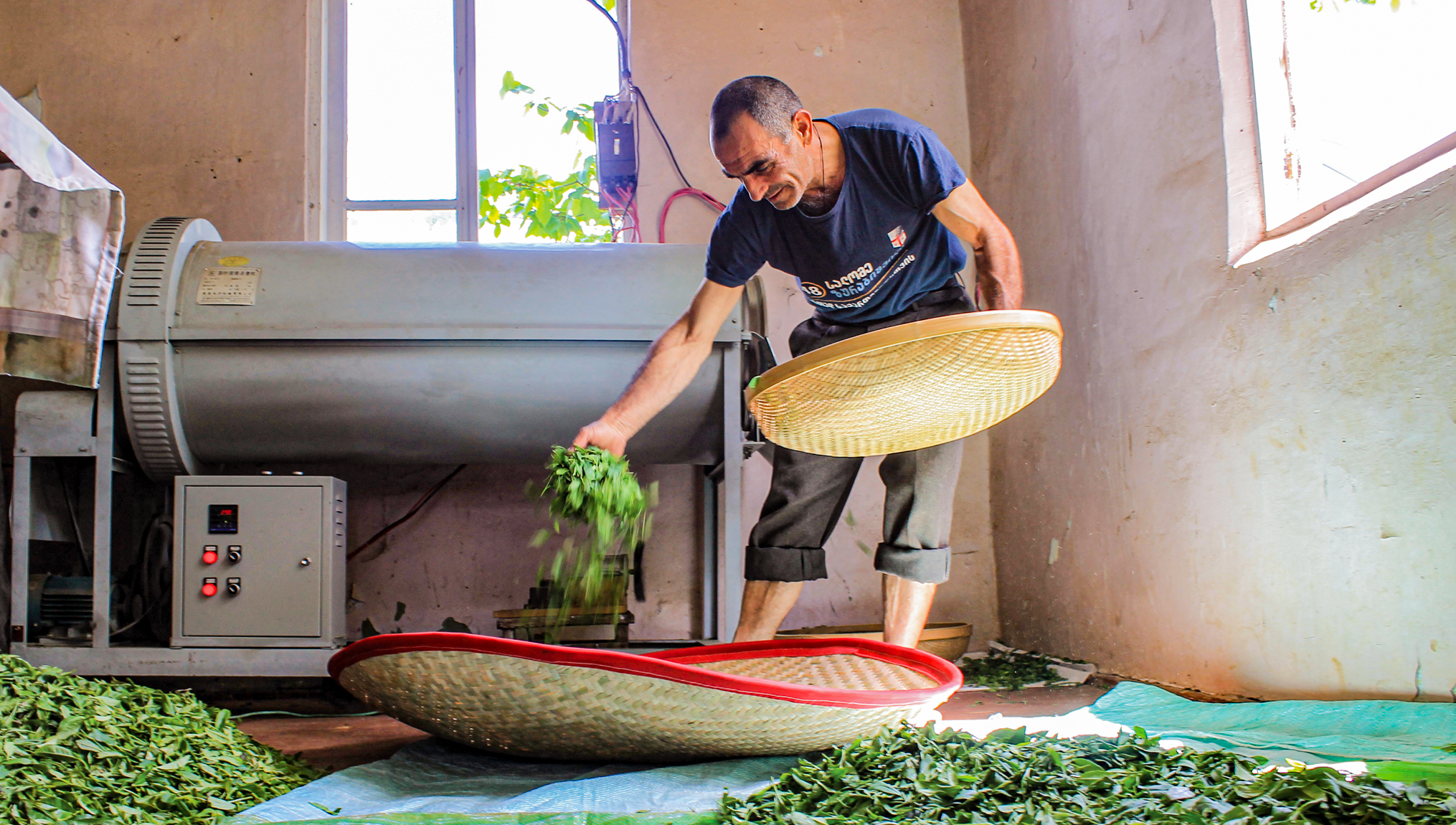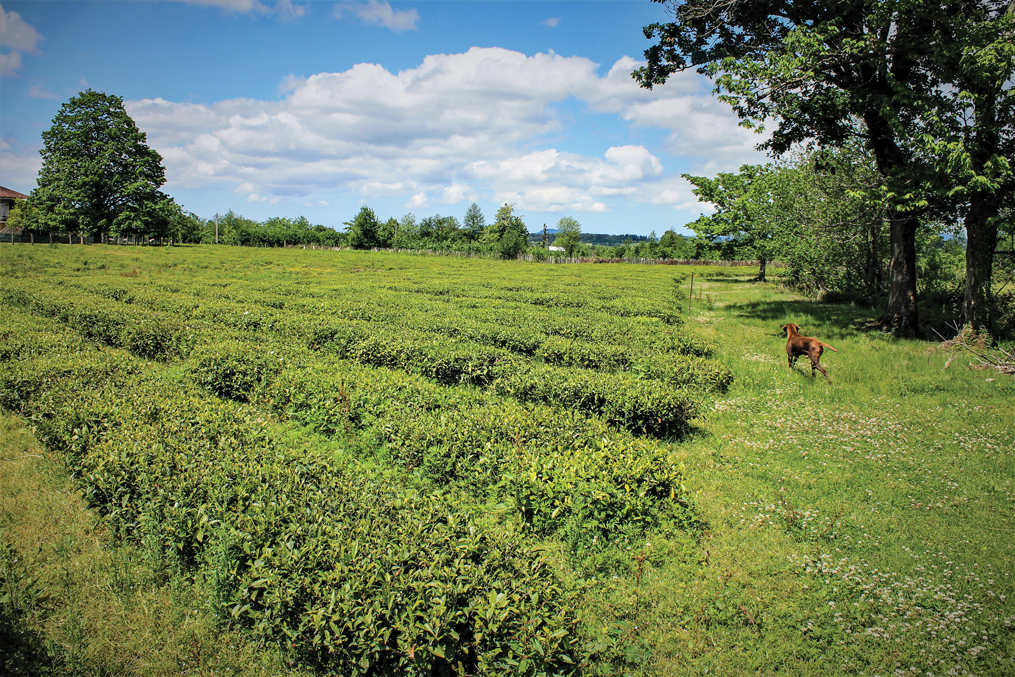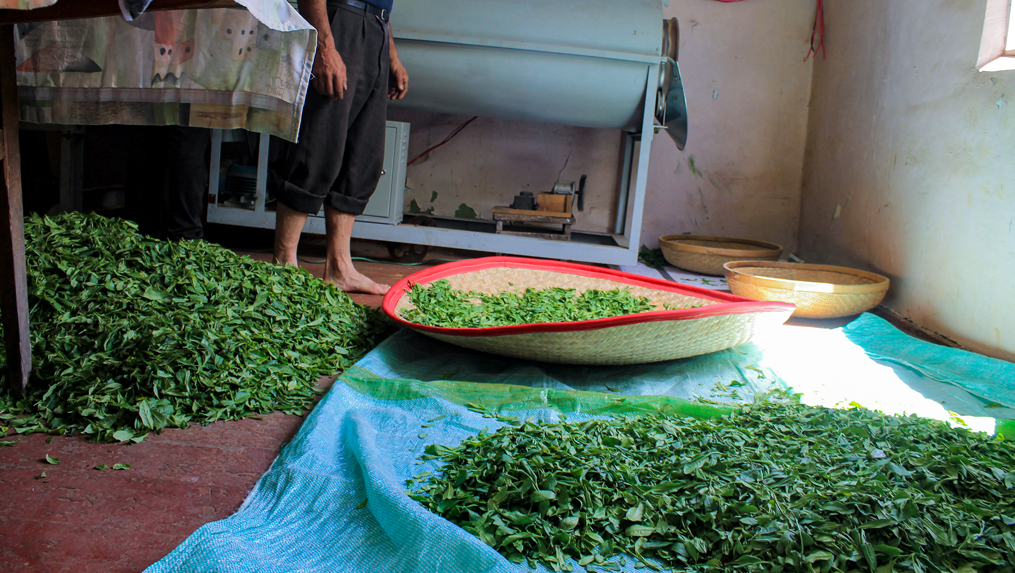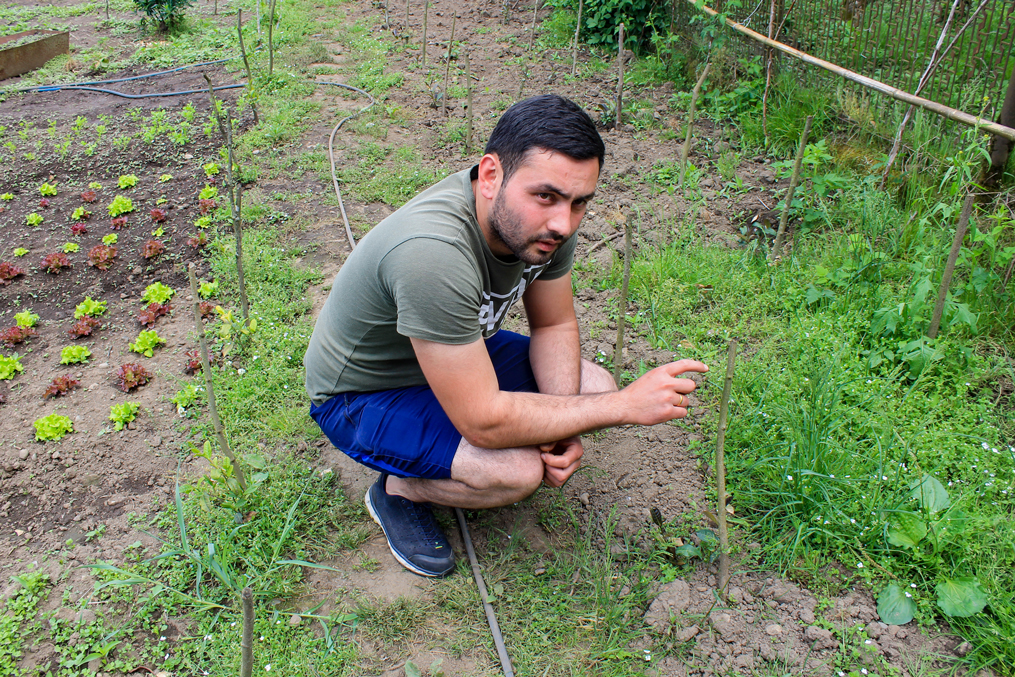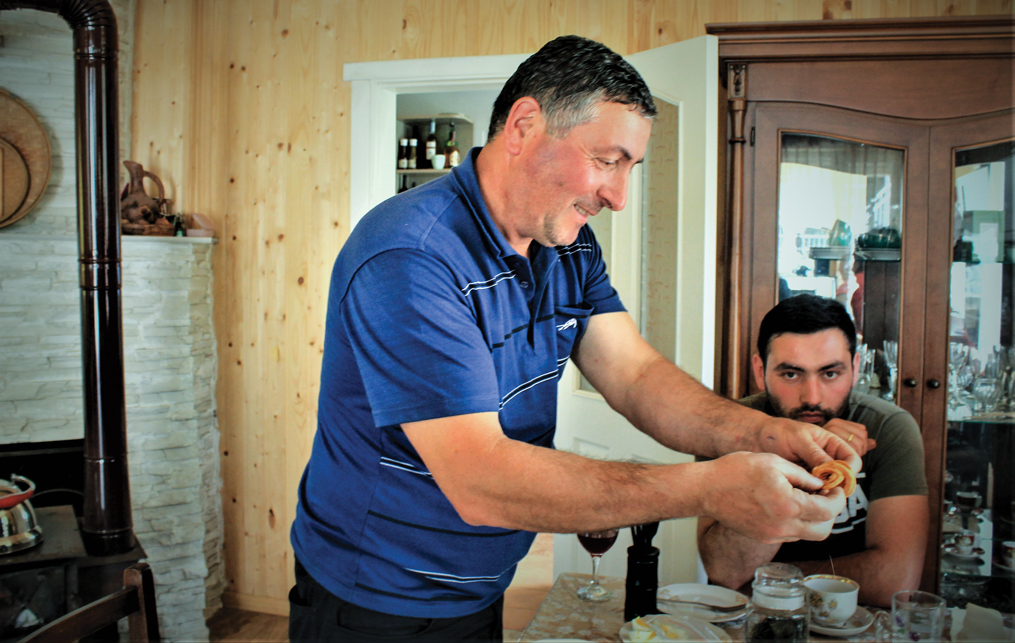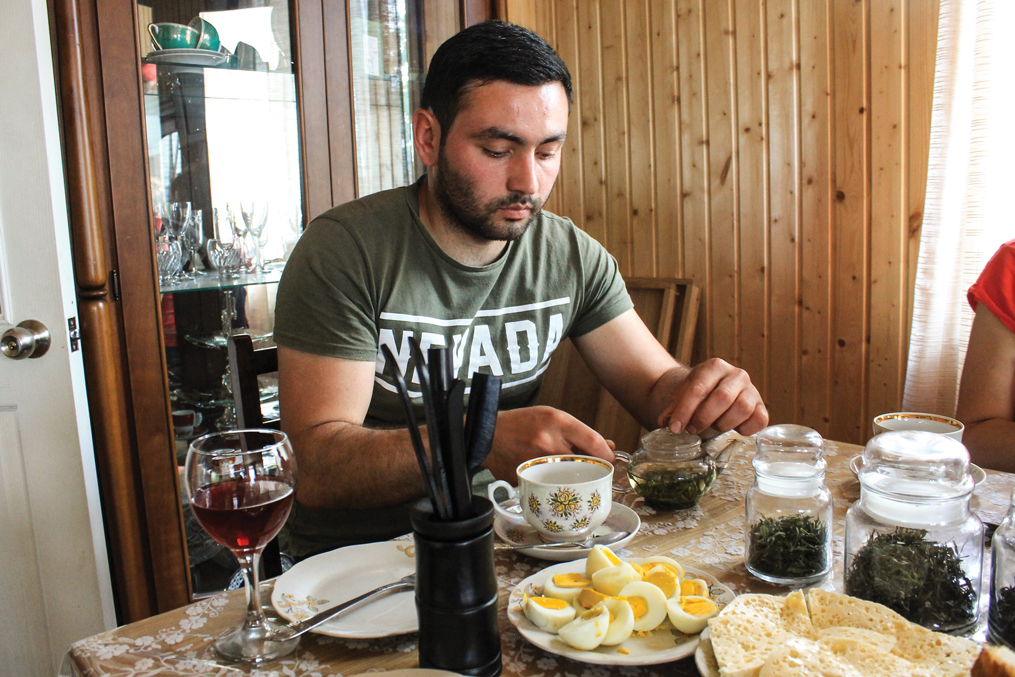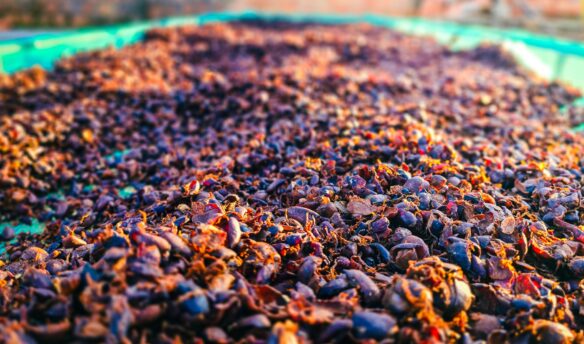A small country in Eurasia, nestled between the Black Sea and the Caspian Sea and situated within the Caucasus Mountains, Georgia is a country of alpine peaks, fertile river valleys, and subtropical areas ideally located for tea production.
Georgia shares borders with Turkey and Armenia to the south and Azerbaijan to the east, but its northern border with Russia is where Georgia’s tea history began.
A Brief History
Georgia was fully integrated into the Russian Empire in the 19th century. Russians’ desire for tea dates back to the 17th century when the czar was gifted four pounds of Chinese green tea. From there, the aristocracy took to tea very quickly, and tea became an essential and expensive habit for the upper class.
During the late 17th and 18th centuries, the caravans that brought tea to Russia took 18 months to obtain it from its source. But once Georgia was part of the Russian Empire, it was easier for the Russians to exploit Georgia’s natural gifts and access their essential beverage.
The Georgian Prince Miha Eristavi first encountered tea during his travels to China in the 1830s. At the time, taking seeds out of China was forbidden, but the prince managed to smuggle them in bamboo and created Georgia’s first tea farms in the region of Guria in 1847. But despite the Prince’s efforts, which included taking his tea to an agricultural exhibition in St. Petersburg in 1864, Georgian tea initially did not take off.
It was not until 1892, when Russian tea merchant Konstantin Popov set up 300 hectares of tea farms in neighboring Adjara, that things began to turn. After his tea-producing endeavor proved a failure, Popov invited Liu Juzhhou, a Chinese tea expert from Guangdong, who brought 1,000 tea seeds and saplings and helped the Russian producer win an international award for best tea in 1900. From this moment, Georgia was recognized as a tea-making country, even taking their tea to the World Expo in Paris and winning a gold medal. Georgian tea was finally on the world stage.
Sadly, the focus on quality production ended when the Red Army invaded in 1919, and Georgia found itself behind the Iron Curtain. Production continued, focusing on numbers, mechanizations, and chemical fertilizers. By the 1930s, the USSR collectivized 91% of all agricultural land, and rural households were required to enter their property, livestock, and assets into collective farms.
Tea production grew in quantity, and by the 1980s, Georgia was the fourth-largest exporter of tea in the world. Soviet tea production was highly mechanized; hybrids were developed for higher yields rather than taste. Limitations were put on farmers and what they were permitted to produce, and quantities were monitored continuously. Tea had become a state matter, but when the Soviet Union finally collapsed, the Georgian tea industry collapsed along with it. During the post-Soviet period, when Georgia descended into an economic crisis, the tea farms were largely forgotten—except for a few families.
Winding Roads
I was interested in Georgian tea production because while tea is so integral to daily life in Georgia, most of the tea available at the markets was a low-quality leaf. While drinking tea packaged under the local Koni label, I learned about the Tenieshvili family.
I decided to visit the family’s farm in Guria, a region known through Georgia for acacia, tangerine production, hazelnuts, and tea. While they belong to Georgia, Gurians are distinct culturally; they have a dialect, way of speaking, foods like khachapuri (the national cheese bread), and even a style of football all their own.
On a bright, sunny day in late spring, we drove through acacia forests that perfumed the air on winding roads. After the drive through the mountains, we finally came into a valley and moved into Ozurgeti, the capital of Guria and home to the Tenieshvili farm. Pulling off a dirt road, we arrived at the farm, where we were greeted by the entire family and welcomed into their home.
The Tenieshvili farm is family-run by the elder Davit, with his son, Gabriel, at the helm of production. It is 100% organic and entirely self-sufficient, producing its own food and energy. While walking on the grounds, we met hens, pigs, and various other animals, while Gabriel’s dogs happily followed us the entire time.
The family’s extensive garden grows corn, fruit trees that produce at different times of the year, grape vines climbing up trees, and a two-hectare plot of tea bushes. They manage the entire production from harvest to packaging but do not yet have their own private label. Though they acquired modern machinery in 2012, Davit still prefers the hand-rigged tools he relied on in the 1990s.
After Gabriel concluded his farm tour, including fermentation, drying racks, packaging, and sorting, we went back to the family home to taste tea—but as this is Georgia, there is no such thing as a small tasting. While we were on our tour of the grounds, Gabriel’s wife had been busy setting up the table with snacks of their homemade cheese, eggs, dried fruit, fruit leather, and chocolates. Davit met us at the home, and I finally had the opportunity to talk with him about his long history with tea and his vision for the future. While tasting the white, green, and black tea, Davit told me his story.
A Renewed Interest
Davit Tenieshvili and his family have been involved in the tea industry since before he was born. When he was a child in the 1980s, his family worked in tea and lived on a collective farm. Families were allowed to dedicate a small portion of their land to their own production. Davit’s family not only grew food but also produced small quantities of high-quality tea for their personal use.
He told me the Soviet model depended on mechanization and chemical fertilizers to increase production at the expense of quality. After the fall of the USSR, the tea industry collapsed. Most of the machinery was sold abroad, tea farms were abandoned, and farmers could not afford the chemicals they thought they needed to survive. The post-Soviet economy was turbulent. In the 1990s, the family supported themselves with subsistence farming.
Over the last few years, there has been renewed interest in Georgian tea, and with that interest comes investments both foreign and local. Davit and Gabriel have spent this time recovering lost and abandoned tea bushes that their family has always worked. They’ve revived 80-year-old bushes that now produce high-quality leaves ten months a year.
They tell me that when the tea bushes were abandoned, the land quickly returned to nature, so they had to find a balance in reviving the bushes while respecting the environment. Davit feels the earth is a gift. They decided not to rip out the various walnut and fruit trees that had taken over but instead left them to provide shade and homes for birds that, in turn, act as natural pest control.
When we finally got to taste the tea, the method of pouring stood out. Davit was precise with temperatures for each type of tea, brewed in a small glass decanter pot for five minutes. When poured into delicate porcelain teacups, the tea is poured only halfway, and then plain hot water is poured on top of that.
Gabriel poured in order of flavor profile: first white, green, and then black tea, all with different water temperatures. The quality of the tea spoke for itself; very subtle flavors, vegetal, herbal aromas, and a refreshing taste in which tannin did not overwhelm—no honey, sugar, or milk necessary.
I asked Gabriel and Davit why most of the tea in the market wasn’t so great. They explained that it was made up of lower-quality leaves from Georgia, and up to 80% of the leaves could come from low-quality production in other countries; as it had 20% Georgian tea, it was labeled Georgian.
I hope that as these small family producers expand, high-quality teas will become more available to Georgians and foreign markets. The Georgian tea industry is heading into a renaissance due to people like David and Gabriel Tenieshvili, family producers who have the vision to produce high-quality products.
All photos by Sarah May Grunwald
This article was originally published on January 27, 2020 and has been updated to reflect Fresh Cup’s current editorial standards.


